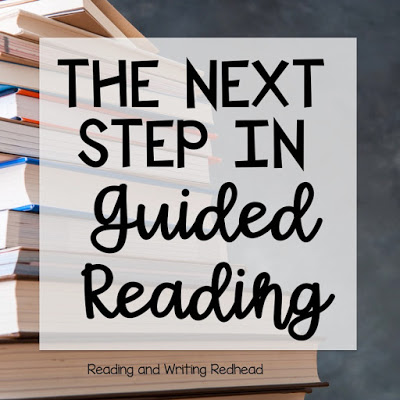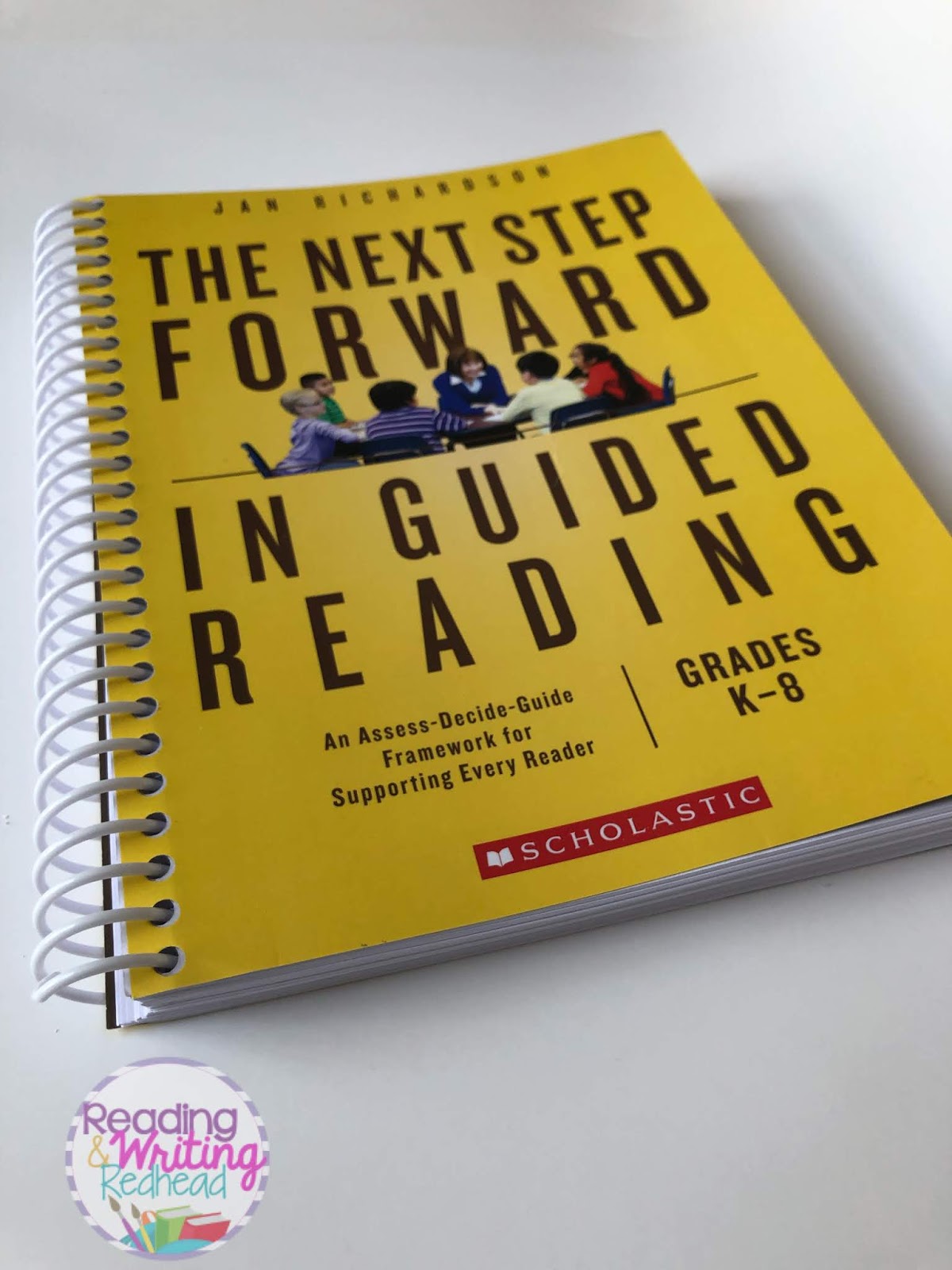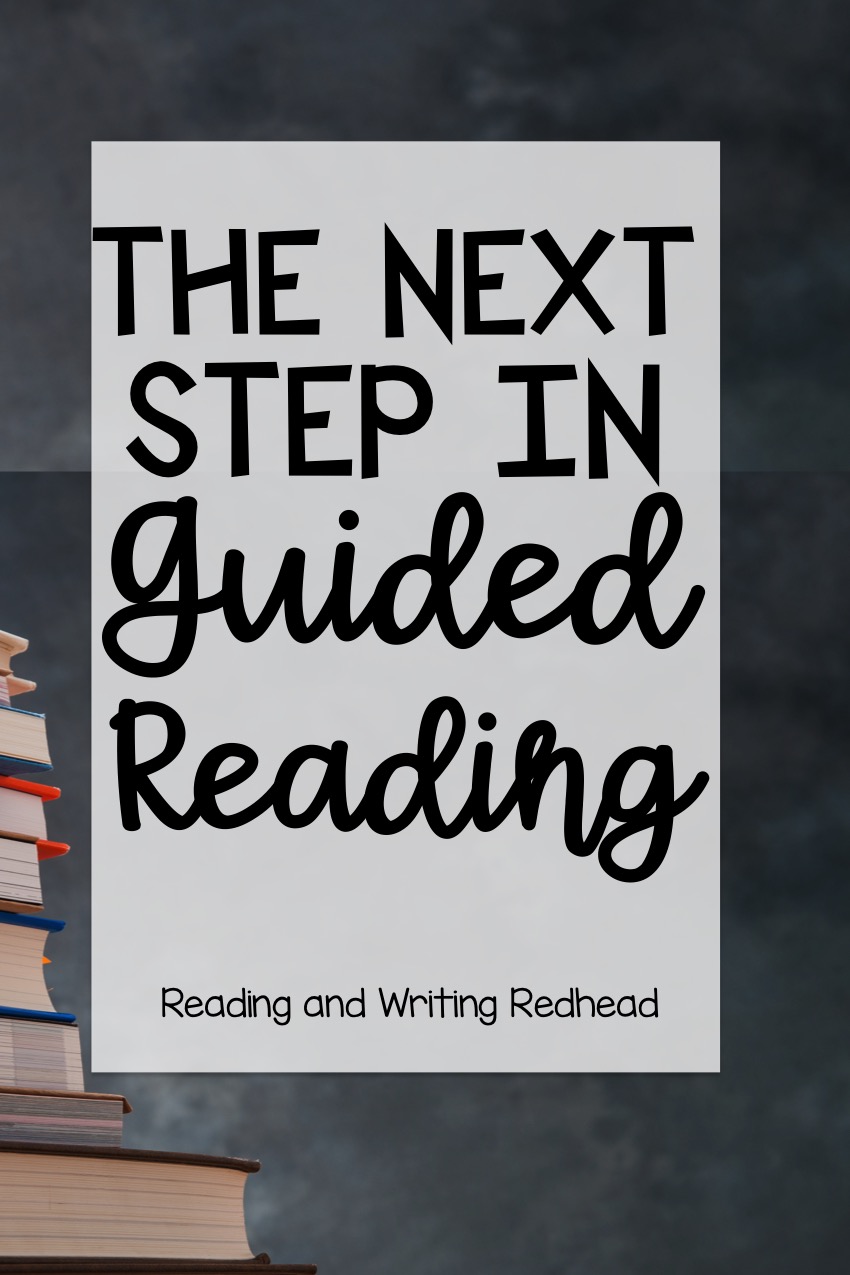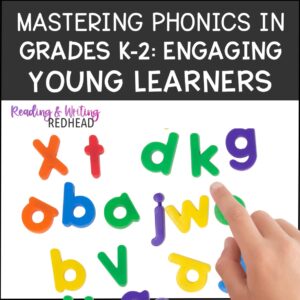
Reading to go the next step with your Guided Reading Instruction? I read a terrific book this past summer by Jan Richardson, called The Next Step in Guided Reading, and I’d love to do a little book review for you here so you can decide if the book is right for you! I found it to be clear and easy to read and the suggestions are totally terrific!

The second edition I have as pictured about has an introduction in which she explains her “assess-decide-guide'” procedure. You assess student first, decide what they need, and guide them through instruction at their level.
Chapter 1:
This chapter goes through the guided reading essentials and takes about read alouds, shared reading, independent, and self-selected reading which is all very important to get going in your reading class! Also importantly, she backs up what we know as teachers – during the first few weeks of school students need to learn to work cooperatively, get along, learn routines and expectations and teachers need to help build classroom community. She suggested six weeks to practice routines and build stamina, and start your teacher reading groups with all groups at the end of six weeks. Richardson explains that for reading workshop, you start with a mini lesson for the whole class, then run your groups for 45 minutes to an hour, and come back together at the end. She also provides many ideas for center activities for your students.
Chapter 2-6
The next few chapters break down the recommendations for doing guided reading with groups of students at different reading levels. Remember, get your information from your assessments and group your students according to their instructional level. Remember the zone of proximal development? Students need to be working in that zone with you! Chapter 2 includes instructions for Pre-A readers.
The next few chapters are:
- Chapter 3: Early Readers
- Chapter 4: Emergent Readers
- Chapter 5: Transitional Readers
- Chapter 6: Fluent Reader
Each chapter includes a guided reading lesson overview, sample two day lesson plan, which includes a sight word review, a book introduction, reading with prompting, discussion prompt, teaching points, teach one sight word and on day two you do similar activities except students reread the text, reteach a sight word and do guided writing instead of word study.
In all chapters you analyze problem areas (charts included), look at the next step for struggling readers (advice and lesson plan), adaptations for ELLs and students on IEPS, and information on when to move on to the next level.
Note: when students reach transitional reading phase, the guided reading plans move into 3 day plans. Books may be read over a two day period. Lesson plans for day 1 and 2 include a book introduction, or new section introduction, reading, discussion prompts, teaching points and word study. Day 3 is guided writing. Fluent reading lesson plans are 4 days; day 1 is to introduce a new book, share new vocabulary, read and respond, discuss and teach and new word lists. Day 2 and 3 include continuing to read, share new vocabulary, read and respond, discuss and teach and sharing new word lists. Day 4 is for writing prompt , planning and writing with prompting.
Chapter 7
The next chapter includes detailed information abut teaching comprehension. Jan Richardson says that only “12 comprehension strategies are really needed”. Those strategies are listed as:
- Comprehension Monitoring
- Retelling
- Developing Vocabulary
- Asking and answering questions
- Identifying main ideas and details
- Analyzing characters
- Analyzing relationships such as cause and effect and compare and contrast
- Inferring
- Summarizing
- Evaluating (understanding theme, authors purpose point of view, fact vs. opinion, etc)
- Using text features
- Understand text features (understanding how the author organizing the information such as description, problem solution, cause and effect, compare and contract and time order/sequence).
Appendices
Even the appendices are chock full of helpful information. This has a ton of copy and go pages to help you get organized and things like Sound Box Templates and Word Walls for students that you should copy and laminate or put in page protectors for students.
If you are teaching reading and using the guided reading model, I highly recommend this resource!
What is your favorite resource for teaching guided reading? Let me know with a comment!






